RV TPMS Buyer’s Guide
There are a lot of options to consider when deciding on an RV Tire Pressure Monitoring System. You have to choose which sensor type is best for you, which monitor style you prefer, which information you want available on the display, and more. It can be overwhelming when there are so many options, so we have broken it down for you to make the selection process less painful.
At TechnoRV, we carry the TST 507 TPMS, TST 770 TPMS, and the TireMinder i10 and APP TPMS. We will be noting the features of these models throughout this guide, but you can apply these same features to any TPMS you are considering.
Sensor Types
When purchasing a TPMS for your RV, you will find that there are a few different sensor choices. Let’s dive a little deeper into these sensor types.
Valve Stem Sensors
This is the most common type of sensor you’ll find when it comes to RV TPMS kits. A valve stem sensor is simply a sensor that screws onto your valve stem. These sensors make is very easy to install a TPMS. There are three main types of valve stem sensors:
Cap Sensor
These are typically the most compact sensor type and are called cap sensors because, well, they are just a small cap that screws onto the valve stem. For most brands of TPMS, the cap sensor is approved to be used on metal or rubber valve stems. Cap sensors are great for towed or “toad” vehicles because most passenger vehicles have rubber valve stems and shallow wheels. Cap sensors generally weigh less than an ounce, and will not affect the balancing of your tires. Cap sensors need to be removed from the valve stem in order to add air to your tires and should come with some type of anti-theft feature. Most cap sensors on the market will have a user replaceable battery that should be changed about every year which is convenient since most RVers tend to like the ability to change the batteries in their sensors. These cap sensors are weatherproof and can handle getting wet, but should not be submerged, like on a boat trailer.
TST 507 & 770: Cap sensor available
TireMinder i10: Cap sensor available
Flow Thru Sensor
These sensors are designed so that you can put air in your tires without taking the sensor off of the valve stem, thus the name Flow Thru. These sensors are a bit longer than the cap sensors, and are usually a few grams heavier, but they are still under an ounce and will not affect the balancing of the tires. Flow Thru sensors are ideal for any type RV that has metal valve stems. Flow thru sensors should only be used on metal valve stems and should come with some type of anti-theft feature. The other consideration when using the Flow Thru sensors is how deep your wheels are. Since these sensors can measure in at about two inches long, you may want to check the distance from the end of the valve stem and the sidewall of your tire. Some RVers prefer not to have a sensor sticking out past the sidewall and some RVers do not care about this. All Flow Thru sensors on the market have user replaceable batteries that should be changed about once a year. These Flow Thru sensors are weatherproof and can handle getting wet, but should not be submerged, like on a boat trailer.
TST 507 & 770: Flow-thru sensor available
TireMinder i10: Flow-thru sensor not available at TechnoRV
Hybrid/Marine Sensor
This is a sensor only offered by the TST brand, and is basically a cap sensor, but it is laser sealed. This means that the sensor can be submerged in water making it ideal for boat trailers. Also, because the sensor is sealed, you cannot change the battery in it. This sealed sensor comes with an extended life battery that last for three to four years. Once the battery depletes, you throw the sensor away and buy a new one. This sensor can also be used on RVs for those that would rather not change batteries every year. Again, the downside is that once the battery depletes, the sensor is dead. Also, this sensor does not come with an anti-theft feature.
TST 507 & 770: Hybrid/Marine sensor available
Internal Sensors
An internal TPMS sensor is installed inside of your tire around the wheel. There is no need to worry about your valve stems or sensor theft when using internal sensors. These are sometimes called “band” sensors, as they are installed onto the wheel of the tire using a metal band. You’ll need your tire technician to install these for you. These internal sensors come with an extended life battery and you should get four to five years of life from the battery. Once the battery depletes, then the sensor is dead and will need to be replaced. These sensors are not as popular as the valve stem sensors as they do require the tire to be broken down for the install. The good news is that once they are installed, then you do not have to worry about them for a long time.
TST 507 & 770: Internal sensor available
Signal Booster/Repeater
Tire Pressure Monitoring Systems operate from a radio signal, and sometimes there can be signal issues from the sensor to the monitor. This is easily resolved by installing a small signal booster/repeater. These repeaters ensure that you always have a strong signal, even in bad weather or areas of heavy electronic interference. Usually the repeater takes 12-volt power, so connecting it to the batteries in your RV makes this very simple.
Many TPMS systems include the repeaters in the price of their kits. You will need to double check to make sure that the TPMS that you choose includes a signal repeater, and if it doesn't then you need to add one to your order. I always recommend using repeater with a TPMS regardless of the size of your RV. You may connect the system without the signal repeater, but then one day you drive through a rainstorm and start having signal issues which would have been resolved with the signal repeater. Again, always install a signal repeater regardless of the size of your RV or how well the system works when you initially hook it up. These signal repeaters are easy to install and will make the experience of using a TPMS flawless.
A good quality signal repeater and TPMS will cover more than enough distance to properly monitor each of your RV tires. For example, the TST 507 TPMS system includes a signal repeater with your kit purchase, and the TST repeater will create a boosted zone of about 100 feet. I don't know of anyone moving more than 100 feet down the road so you should be good with this.
TST 507 & 770: Signal booster included in kit
TireMinder i10: Signal booster included in kit
Pressure Activated Versus Motion Activated
A pressure-activated sensor will automatically start reading and broadcasting a tire’s pressure and temperature when installed on the valve stem. A motion-activated sensor requires your RV or towed vehicle to be moving before it will begin to send data to the monitor.
The advantage of a pressure activated system is having the ability to know each tire’s pressure and temperature before you start driving. The motion activated sensors on the market were put in place as a way to conserve battery life as the sensor would go to sleep when not moving. The problem with this is that this does very little to conserve battery life, and even if a battery lasted another week or so, it would not be worth it to not have your tire's data before moving. One of the advantages of having a TPMS for your RV is that you don’t have to manually check your tire pressures before heading out on a trip. For me, there is no decision here, and a pressure activated is the only way to go.
TST 507 & 770: Pressure activated sensors
TireMinder i10: Pressure activated sensors
Display Monitor
The TPMS monitor will vary based on the system that you choose. The data that is shared on the monitor, how it alerts you, and what the screen does while driving can vary. At TechnoRV, our two most popular models are the TST 507 TPMS and the TireMinder i10 TPMS. Look for a comparison of our two most popular models below each feature below.
Display Screen Size
Most TPMS display monitors on the market are a good size for you to see the data. Since you are not constantly looking at them for important data while you drive, like with an RV GPS, TPMS monitors are small enough to not take up too much of your dash space. Trust me, if there is a problem you need to attend to with your tires, the TPMS monitor will audibly alert you.
The TST 507 TPMS shows both pressure and temperature on the same screen, and it scrolls through the tire positions while you drive. If there is ever any issue, it will stop scrolling and go right to the tire in alarm. The TireMinder i10 TPMS monitor shows one point of data (pressure or temperature) and all tires on one vehicle (front or rear) on one screen and in order to see other points of data or the other vehicle, you simply press a button.
TST 507 Monitor dimensions: 3.46” Length x 2.36” Width x 0.94” Depth
TireMinder i10 Monitor Dimensions: 3.75” Length x 2.75” Width x 0.6” Depth
Alarm Parameters and Settings
A TPMS works by monitoring your pressure and temperature and uses built-in parameters to determine when your tire is having issues. For low pressure, a TPMS will alarm you if your tire pressure reduces by 10-15% while they give a 20-25% allowance on the high side. Remember, low pressure is more dangerous than high pressure and pressure increasing when you drive is completely normal in a tire.
Some TPMS systems allow you to customize these parameters based on your cold tire pressure while some will not allow you to customize your parameters and preset them instead. Although having them set automatically seems helpful, I prefer having the option to customize the parameters. When I am traveling in hot weather, it is not uncommon for my tires to run between 20-25% above cold tire pressure, which is completely normal on a hot day.
TST 507: Allows custom parameters; recommends 10% below and 20-25% above cold tire pressure
TireMinder i10: Preset parameters set at 15% below and 20% above cold tire pressure
Color or Monochrome Display
Most brands of TPMS come with a monochrome display. A few years ago, the TST brand became the first TPMS on the market to offer a color display. This display is more brilliant and can make it easier to see. Recently Tire Minder came out with a color monitor on a few models as well. Color monitors are very popular, but like with any screen, if there is direct sunlight then it can make it difficult to see. You do have the option to add a sunshade to a TST 507 display monitor, which can help with this.
TST 507: Offers a color and monochromatic display monitor and an optional sunshade
TireMinder i10: Offers a color display monitor
Display Monitor Power Options
Most TPMS monitors have rechargeable batteries and do not need to stay plugged in to work. Depending on the brand, a TPMS monitor has about 16-20 hours of use before it needs to be recharged. Most TPMS come with multiple charging options.
TST 507: Rechargeable monitor; comes with a 12V and USB charging cable
TireMinder i10: Rechargeable monitor; comes with a 12V and USB charging cable
Ability to Handle Multiple Trailers
Do you have more than one trailer or towed vehicle? Look for a system that offers the flexibility to customize multiple options for your RV, truck and towed vehicles. Some TPMS units on the market allow you to program up to four different trailers into the system. This could be a convenient feature if you tow different things, like a trailer or boat.
TST 507: Allows up to four trailers or towed vehicles on one monitor
TireMinder i10: Allows up to four trailers or towed vehicles on one monitor
Ease of Programming
Most electronic systems have great resources online, such as videos and guides. Compare programming and installation videos online for different systems. TPMS systems are not hard to program, and each brand has their own way to do it. Some systems can only be programmed while at each tire position, like the TireMinder, while other systems like the TST brand allows you to program the sensors away from the tire positions. This can be useful if you purchase a system, but if your RV is in storage, with a system like TST you can go ahead and get the programming completed even though the RV is not in front of you. TechnoRV is known for great training and installation resources so if you purchase any system from TechnoRV, this will be a breeze.
TST 507: Programming does not have to take place at the tire position
TireMinder i10: Programming must take place at the tire position
Alerts and Warnings
A good TPMS system will have an audible alarm and a visual alert should there be an issue with any of your tires including low pressure, high pressure, high temperature, rapid pressure loss, and slow leaks.
TST 507: Both visual and audible alerts and warnings
TireMinder i10: Both visual and audible alerts and warnings
Display Monitor Mounting Options
A good TPMS should offer a few mounting options for your TPMS monitor. You will want a suction cup mount in case you want to put it right on the windshield, and you may also want the option of a dash mount in case you would rather have it sitting on the dash. Some choose to not mount the TPMS monitor and simply place it nearby where they can hear alerts if they happen.
TST 507: Comes with a suction cup mount and a dash mount
TireMinder i10: Comes with a suction cup mount
Smartphone Options
The Tire Minder brand has come out with an app for their TPMS system. Some people like this, and some don’t. The problem that some manufacturers have with having an app is that with the distracted driver laws across the U.S., it almost makes it impossible to use an app without the risk of getting pulled over should you get caught looking at your phone. I personally like having a dedicated monitor for my TPMS system, but if you prefer an app, then that option is available. This app-based unit does require you to install a communication module around your dash areas and this is what communicates the information to the app.
If you would like an app-based TPMS, check out the TireMinder APP TPMS at TechnoRV.
TST 507: Does not have an app
TireMinder i10: Does not have an app
Anti-Theft Features
After you have spent money for a TPMS, the last thing you want is for it to be stolen. Most TPMS come with some type of anti-theft feature. A common feature is to have alocking hex nut that requires a tool to tighten the sensor onto the valve stem. Of course, the sensors will stay on without the locking hex nuts, but it brings comfort to many users and comes with many systems.
TST 507: Comes with locking hex nuts and tool
TireMinder i10: Comes with locking hex nuts and tool
Additional Parts, Replacements, and Batteries
Depending on the system you choose, sensors may have user-replaceable batteries, or they may be sealed with a longer battery life. Typically, sensors with user-replaceable batteries last about one year. We recommend changing out all batteries once a year and inspecting all o-rings and gaskets as well. We also recommend you replace any o-rings and gaskets that show damage from general wear and tear to keep your sensor operational for years to come. The typical battery size for TPMS sensors is either 1632 or 2032. You can get replacement o-rings and gaskets from most TPMS manufacturers and TechnoRV.
TST 507: Uses a CR2032 battery for all sensors except the internal sensor
TireMinder i10: Uses a CR1632 battery
Manufacturer Warranty
As with all electronics, you want to make sure your TPMS has a respectable warranty. Some systems have a one year warranty and some systems have more. I personally like to see more than one year on electronics, and even two or three years would be good. When you are purchasing a TPMS just make sure you make note of the warranty and as long as it is from reputable company, then any issues you have during the warranty period should be covered.
TST 507: Comes with a 3-year warranty
TireMinder i10: Comes with a 3-year warranty
Installation Process
Typically, your TPMS will require you to program your sensors into the display monitor, then install them onto your tires. Keep in mind that your sensors will not send data to the monitor until they are installed on the valve stems, and it may take some time to sync all sensors once installed. A good TPMS system will provide plenty of educational materials to make installation as simple as possible.
It’s Time to Decide!
So, as you can see, there are many features in a TPMS that you need to consider before buying. We have personally tested both the TST 507 and TireMinder TPMS and have used the TST 507 for over six years of full-time use. We are very confident you will be pleased with whichever model you select. If you need help or have any questions about either model, please contact us and we would be happy to help!
To shop all of the RV TPMS models at TechnoRV, click here.
To see a comparison of the TST 507 and TireMinder models, check out the video below.
For a LIMITED TIME, you can save 15% on TST Tire Pressure Monitoring Systems and everything you see below when you use the code DAD15 at checkout. Hurry, the sale ends June 14th.




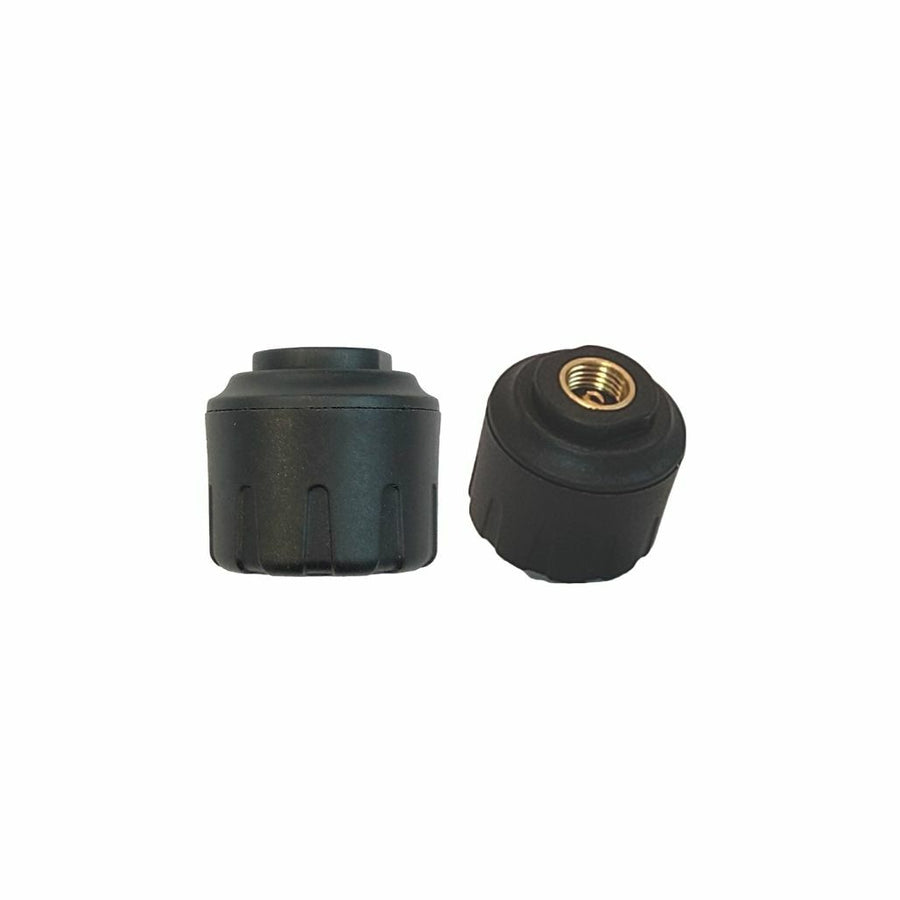
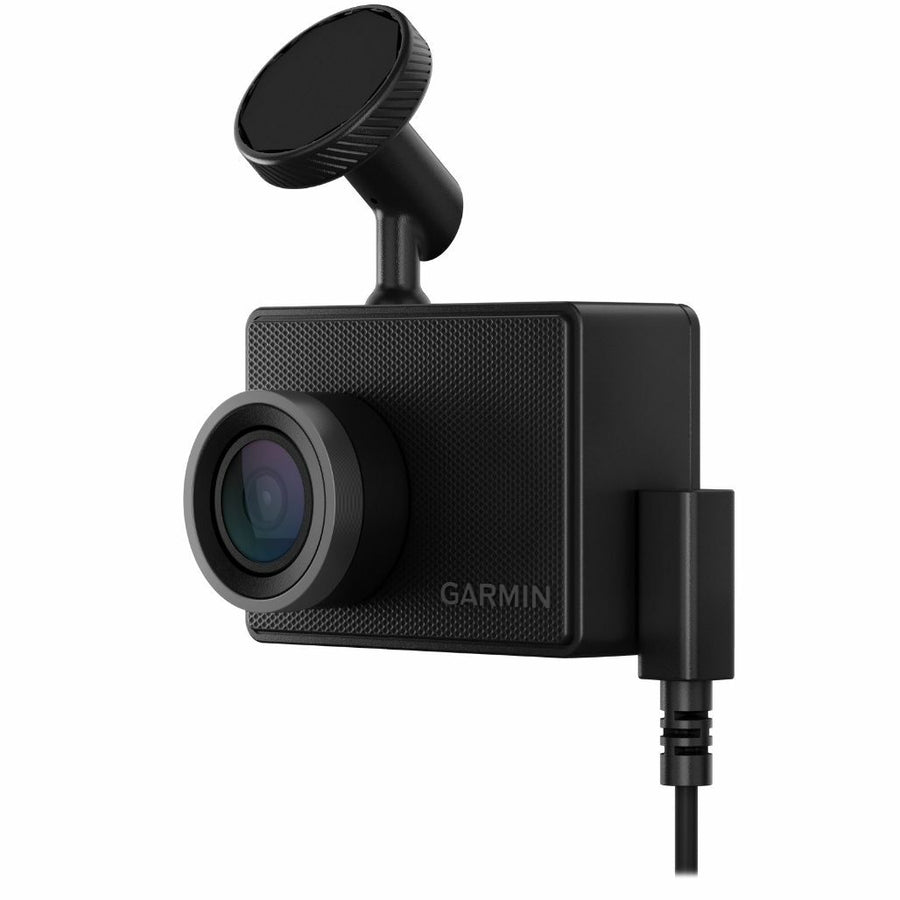
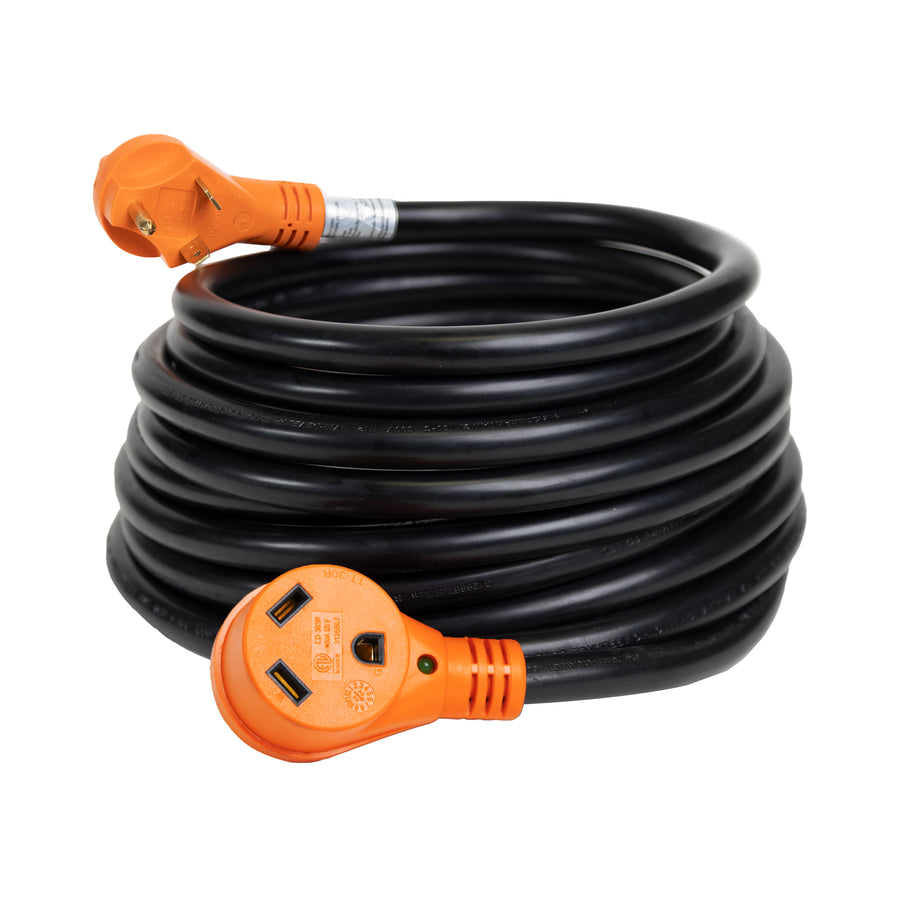
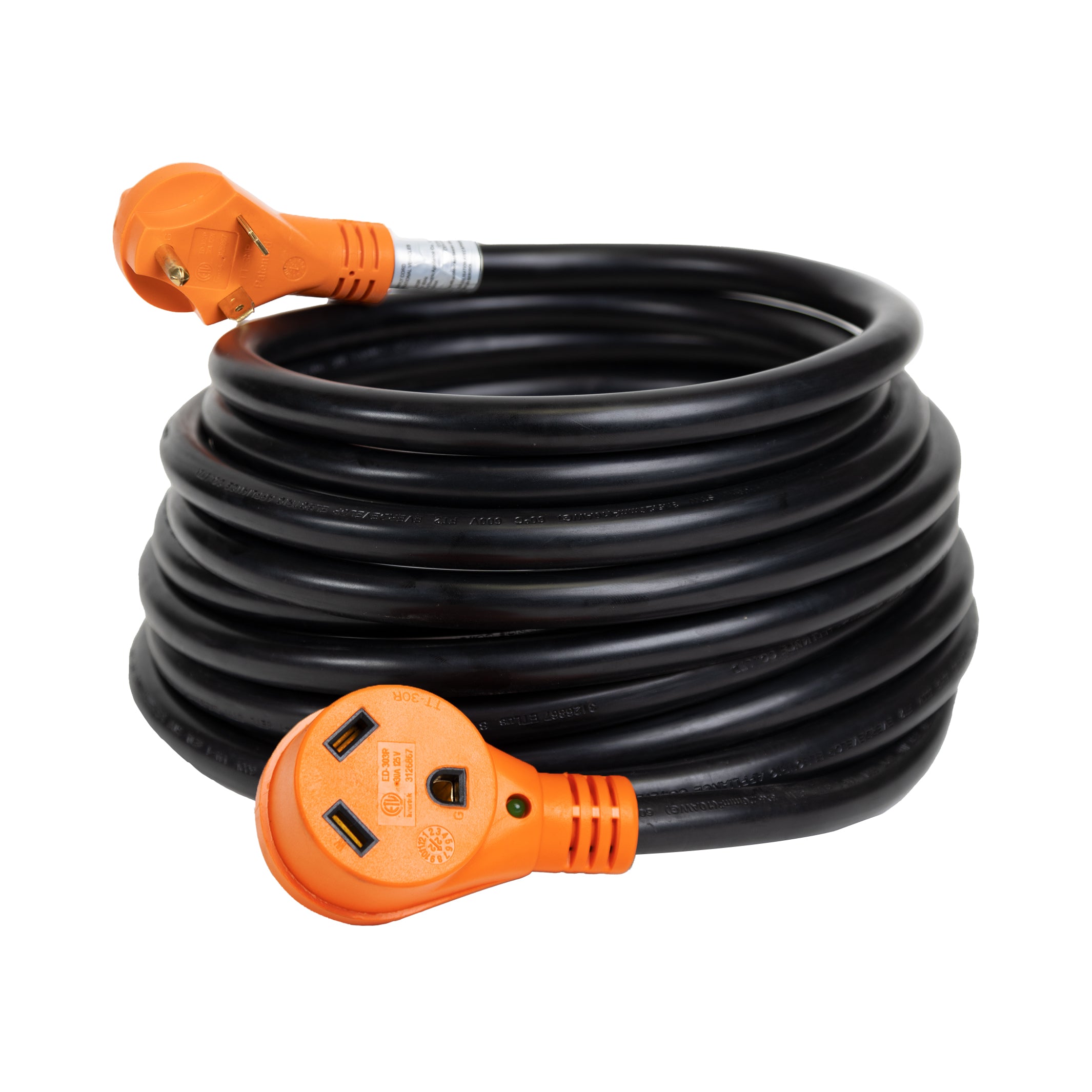
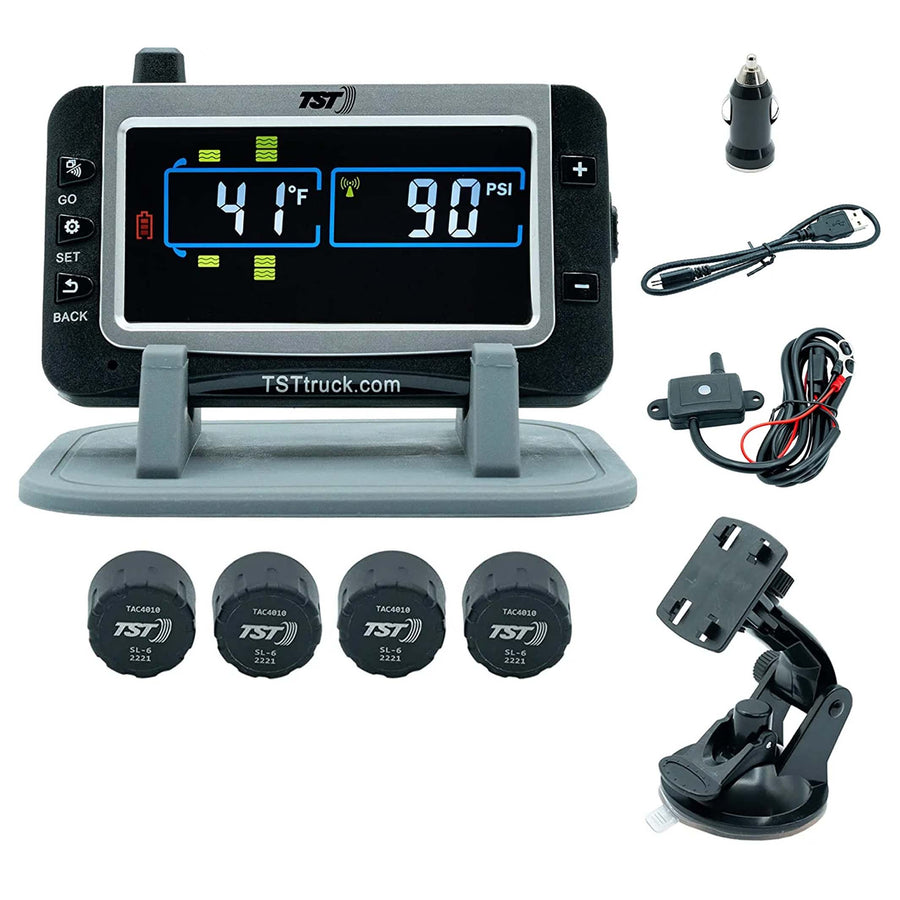
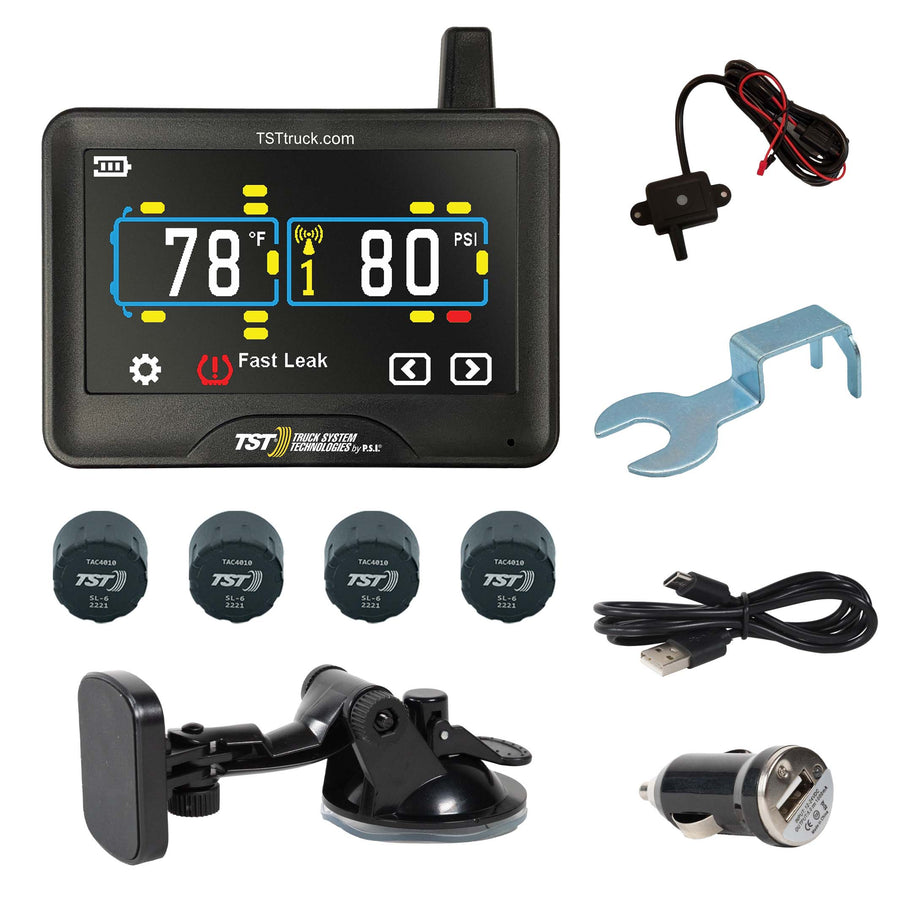
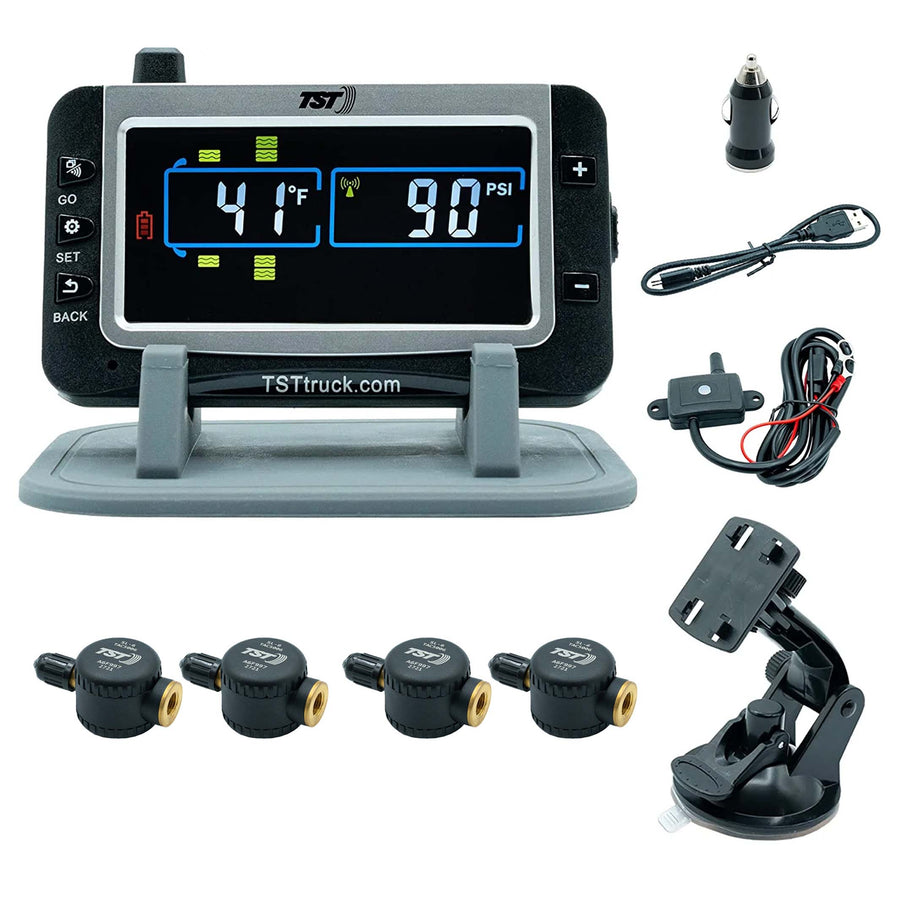
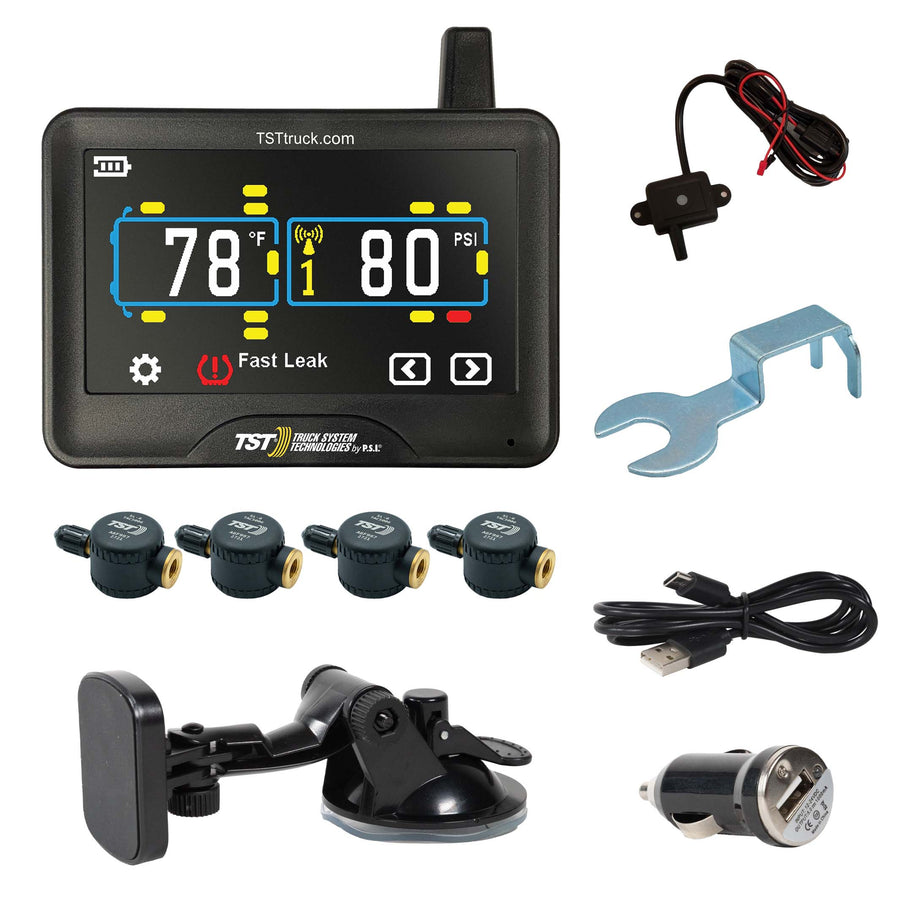

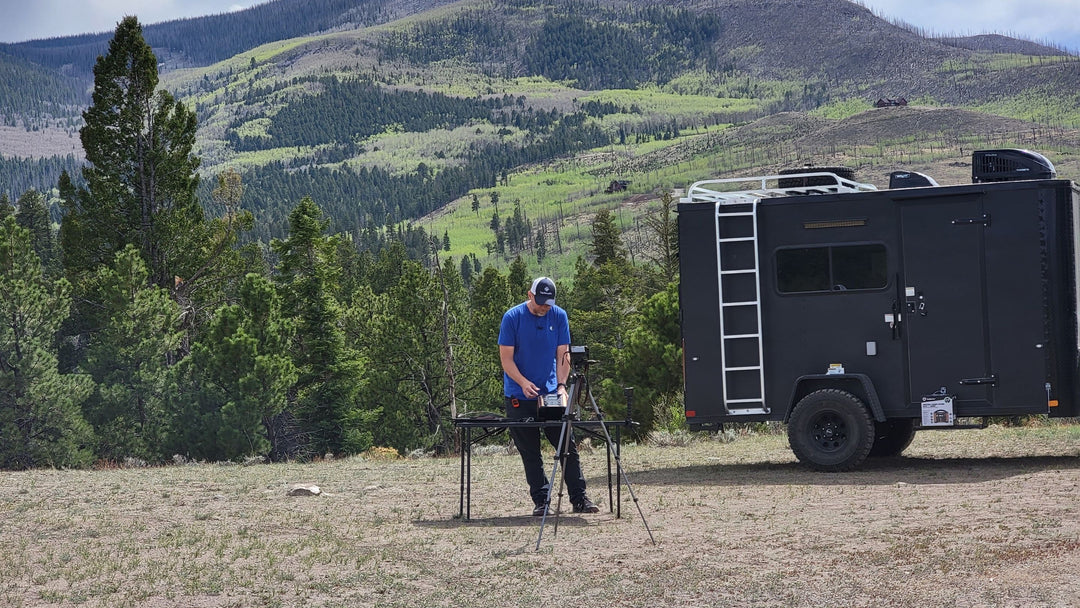
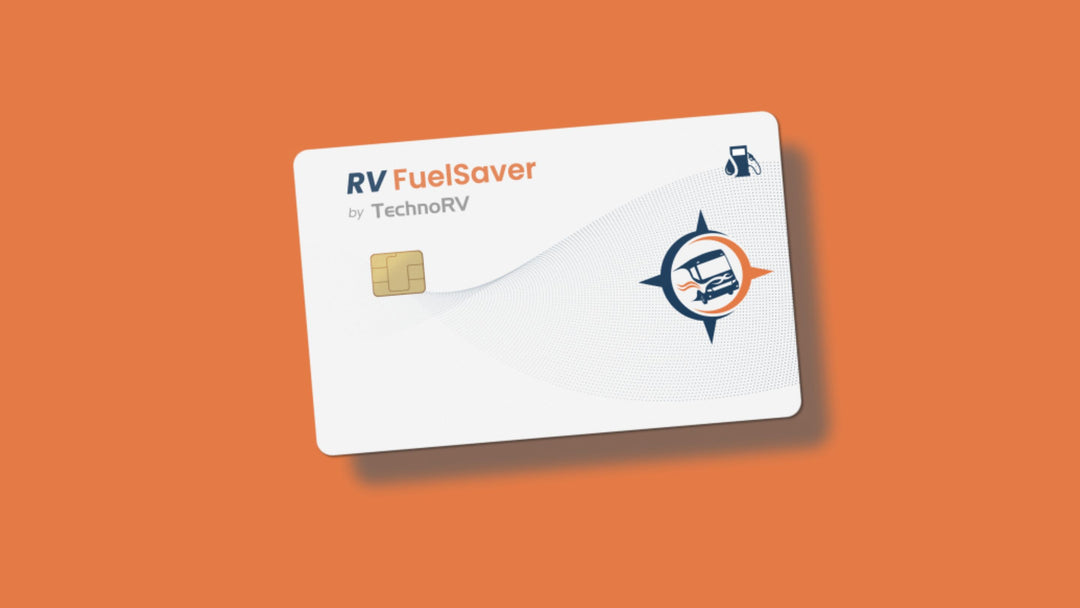
Leave a comment